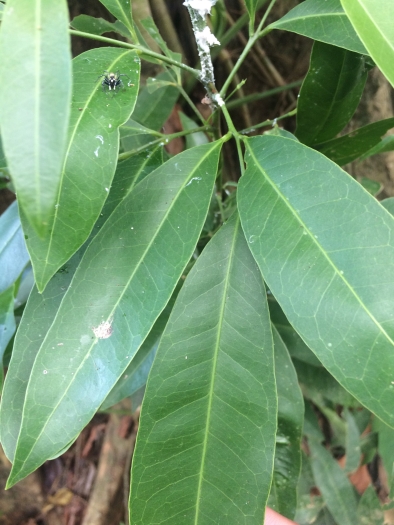Ceylon Hunteria
(Hunteria zeylanica)
Ceylon Hunteria (Hunteria zeylanica)
/
/

© Greg III Espera
CC BY 4.0
Image By:
© Greg III Espera
Recorded By:
Copyright:
CC BY 4.0
Copyright Notice:
Photo by: © Greg III Espera | License Type: CC BY 4.0 | License URL: http://creativecommons.org/licenses/by/4.0/ | Uploader: greg3ph | Publisher: iNaturalist |

Estimated Native Range
Summary
Hunteria zeylanica, commonly known as the Ceylon Hunteria, is an evergreen plant that can take the form of a shrub or a tree and is capable of reaching up to 49 feet in height with a trunk diameter of up to 13.6 inches. It is native to tropical lowland forests and prefers moist, well-drained soils, often found from sea level to an altitude of 1,150 feet. This species is indigenous to a range of countries including Kenya, Tanzania, China, India, Sri Lanka, Indochina, and western Malesia. Its white corolla flowers are modest in appearance, and it bears yellow berries that add to its ornamental value.
The Ceylon Hunteria is valued for its resilience to salinity and is often used in tropical landscapes for its dense foliage and vertical structure. It is not commonly seen in cultivation outside its native range, but it can be an interesting addition to botanical collections or tropical-themed gardens. In terms of care, it requires consistent moisture and can tolerate a range of soil types provided they are well-draining. It thrives in full sun to partial shade. While not widely known for its horticultural uses, its wood is locally utilized for making weapon handles and as firewood. Medicinally, it has been used to treat stomach-aches among other ailments. However, gardeners should be aware that there is limited information on potential problems such as pests and diseases, and further research is recommended before widespread cultivation.CC BY-SA 4.0
The Ceylon Hunteria is valued for its resilience to salinity and is often used in tropical landscapes for its dense foliage and vertical structure. It is not commonly seen in cultivation outside its native range, but it can be an interesting addition to botanical collections or tropical-themed gardens. In terms of care, it requires consistent moisture and can tolerate a range of soil types provided they are well-draining. It thrives in full sun to partial shade. While not widely known for its horticultural uses, its wood is locally utilized for making weapon handles and as firewood. Medicinally, it has been used to treat stomach-aches among other ailments. However, gardeners should be aware that there is limited information on potential problems such as pests and diseases, and further research is recommended before widespread cultivation.CC BY-SA 4.0
Plant Description
- Plant Type: Shrub, Tree
- Height: 20-35 feet
- Width: 15-25 feet
- Growth Rate: Moderate
- Flower Color: White
- Flowering Season: Summer
- Leaf Retention: Evergreen
Growth Requirements
- Sun: Full Sun, Part Shade
- Water: Medium
- Drainage: Medium
Common Uses
Natural Habitat
Native to tropical lowland forests
Other Names
Common Names:
Scientific Names: Hunteria zeylanica , Cameraria zeylanica , Gynopogon lanceolatus , Hunteria africana , Hunteria corymbosa , Hunteria corymbosa var. roxburghiana , Hunteria corymbosa var. roxburghiana , Hunteria corymbosa var. zeylanica , Hunteria lanceolata , Hunteria legocii
GBIF Accepted Name: